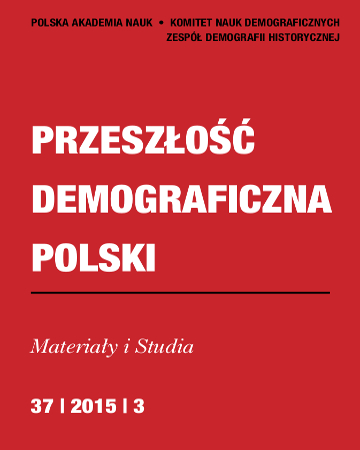Long-term demographic change and local socio-cultural patterns: marriages and household structure in 18–20th century Hungary
Long-term demographic change and local socio-cultural patterns: marriages and household structure in 18–20th century Hungary
Author(s): Péter ŐriSubject(s): History, Anthropology, Social Sciences, Sociology, Local History / Microhistory, Social history, Culture and social structure , History and theory of sociology, Social Theory
Published by: Wydawnictwo Naukowe Uniwersytetu Szczecińskiego
Keywords: marriage; age at first marriage; household formation; Hajnal-line; Hungary in the 18–19th century
Summary/Abstract: The paper tries to reconstruct the main contours of marriage customs and household formation by using and analysing the data of a region situated around Budapest and consisting of about two hundred settlements (on the territory of the historical county of Pest-Pilis-Solt-Kiskun). The analysis focuses on two periods: the first is the end of the 18th century, and the second is the end of the 19th century and the beginning of the 20th century. Sources of the analysis are 18th century household lists (Conscriptiones Animarum) and 19–20th century censuses, the data of parish registers and vital statistics, and those of an 18th century cadastral survey, and 19th century statistics of food prices. All the data used in the course of the analysis are aggregated at least on settlement level, therefore the stress has been laid on the study of spatial differences and changes over time. Further more – by using settlement level data – the determinants of the age at marriage and household composition have been searched for. The analysis managed to reveal differing urban and rural patterns in this respect, and in the case of marriages and the age at first marriage the changes over time were also considerable. Age at marriage and household formation were determined not only by ethno-cultural norms as Hajnal supposed many years ago, but other economic and social factors (type of farming, social position, type of settlement, region) also affected these studied phenomena.
Journal: Przeszłość Demograficzna Polski
- Issue Year: 37/2015
- Issue No: 3
- Page Range: 7-37
- Page Count: 31
- Language: English

